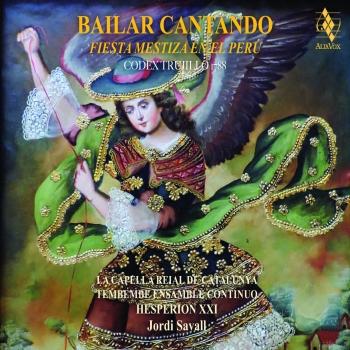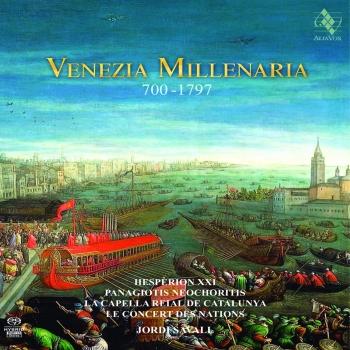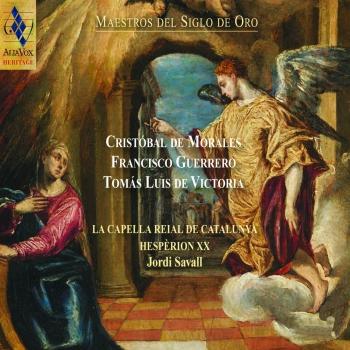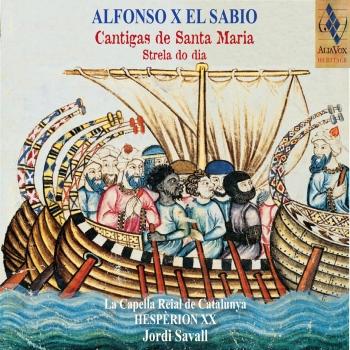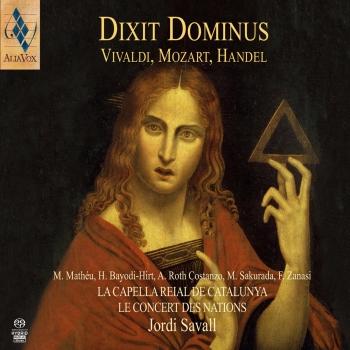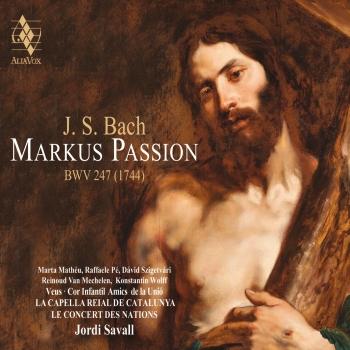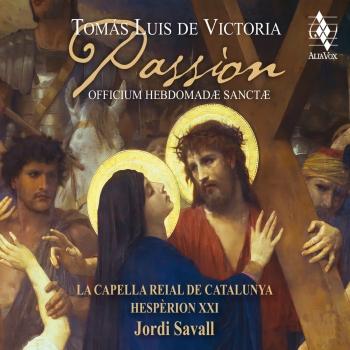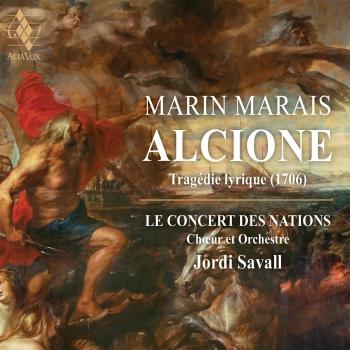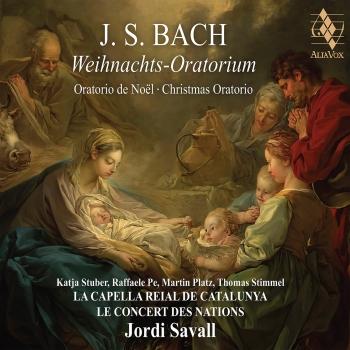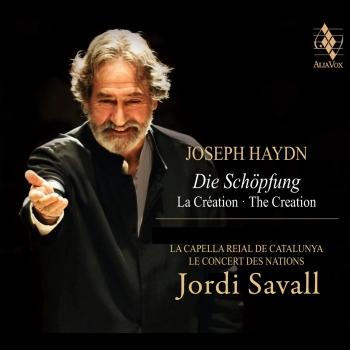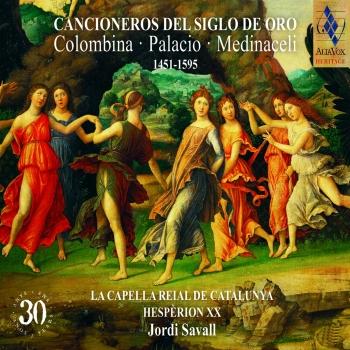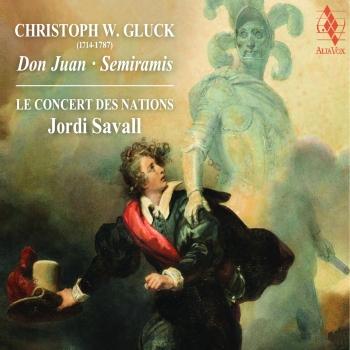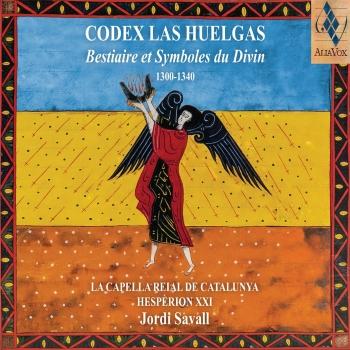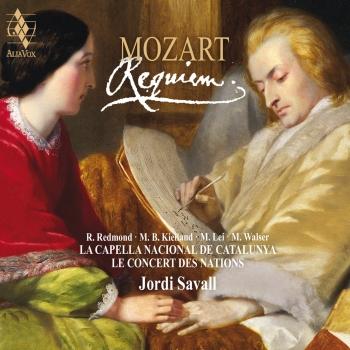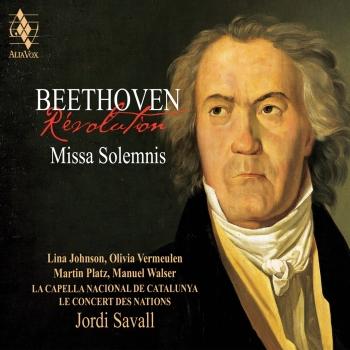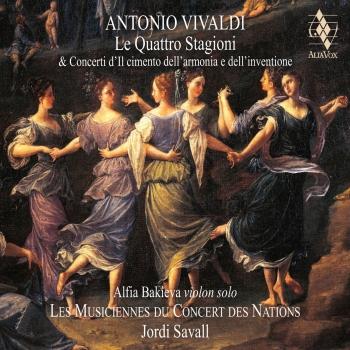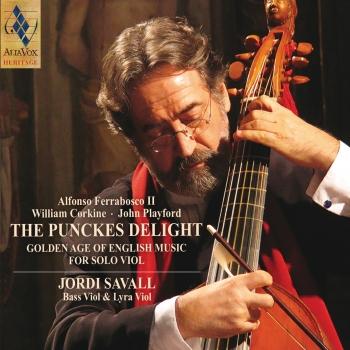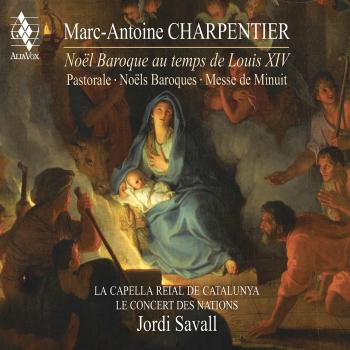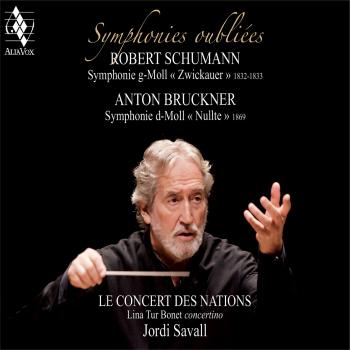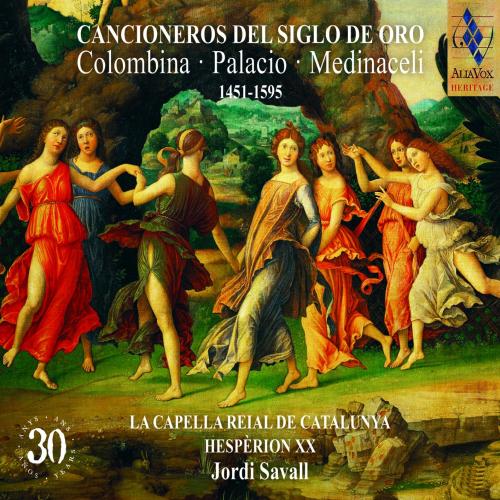
Cancioneros del Siglo de Oro (Colombina- Palacio- Medinaceli 1451-1595) Jordi Savall
Album info
Album-Release:
2022
HRA-Release:
15.04.2022
Label: Alia Vox
Genre: Classical
Subgenre: Vocal
Artist: Jordi Savall
Composer: Cancioneros del Siglo Oro (1451-1595)
Album including Album cover
- Anonymous: Propiñan de Melyor:
- 1 Anonymous: Propiñan de Melyor 01:23
- Anonymous: ¿Cómo no le andaré yo?:
- 2 Anonymous: ¿Cómo no le andaré yo? 03:29
- Francisco de la Torre (1470 - 1520): Dime, triste coraçón:
- 3 Torre: Dime, triste coraçón 03:43
- Enric Foixer: Pues con sobra de tristura:
- 4 Foixer: Pues con sobra de tristura 04:18
- Juan de Triana (1460 - 1494): ¿Querer vieja yo?:
- 5 Triana: ¿Querer vieja yo? 02:53
- Anonymous: Lealtat, o lealtat:
- 6 Anonymous: Lealtat, o lealtat 05:47
- Juan de Triana: ¿Quién vos dió tal señorío?:
- 7 Triana: ¿Quién vos dió tal señorío? 04:18
- Juan Urrede (1430 - 1482): Donde estas que non te veo:
- 8 Urrede: Donde estas que non te veo 03:52
- Hurtado de Xerés: No tenga nadie sperança:
- 9 Xerés: No tenga nadie sperança 03:19
- Anonymous: Muy crueles bozes dan:
- 10 Anonymous: Muy crueles bozes dan 02:56
- Anonymous: In exitu Israel:
- 11 Anonymous: In exitu Israel 01:21
- Enric Foixer: Mi querer tant vos quiere:
- 12 Foixer: Mi querer tant vos quiere 03:22
- Anonymous: Buenas nuevas de Algeria:
- 13 Anonymous: Buenas nuevas de Algeria 01:40
- Johannes Cornago (1400 - 1475): Qué’s mi vida preguntáys:
- 14 Cornago: Qué’s mi vida preguntáys 05:03
- Juan Urrede: Muy triste será mi vida:
- 15 Urrede: Muy triste será mi vida 03:06
- Juan de Triana: Pinguele, rrespinguete:
- 16 Triana: Pinguele, rrespinguete 01:43
- Juan Urrede: Nunca fue pena mayor:
- 17 Urrede: Nunca fue pena mayor 03:52
- Belmonte: Glosa sobre "Nunca fue pena mayor":
- 18 Belmonte: Glosa sobre "Nunca fue pena mayor" 03:09
- Anonymous: Carnago - Triana:
- 19 Anonymous: Carnago - Triana: Señora, qual soy venido 04:47
- Anonymous: Quien tiene vida en esperança:
- 20 Anonymous: Quien tiene vida en esperança 01:28
- Juan de Triana: Pinguele, rrespinguete:
- 21 Triana: Dinos madre del donsel 05:18
- Anonymous: Niña y viña:
- 22 Anonymous: Niña y viña 01:27
- Francisco de la Torre: Danza Alta:
- 23 Torre: Danza Alta 02:10
- Gabriel Mena (1470 - 1528): Aquella mora garrida:
- 24 Mena: Aquella mora garrida 03:50
- Francisco de Penalosa (1470 - 1528): Por las sierras de Madrid:
- 25 Penalosa: Por las sierras de Madrid 04:17
- Anonymous: Rodrigo Martínez:
- 26 Anonymous: Rodrigo Martínez 01:58
- Gabriel Mena: A sonbra de mis cabellos:
- 27 Mena: A sonbra de mis cabellos 01:04
- Anonymous: Al alva venid:
- 28 Anonymous: Al alva venid 04:18
- Anonymous: Tres morillas m’enamoran:
- 29 Anonymous: Tres morillas m’enamoran 03:25
- Anonymous: ¿Qué me queréis, caballero?:
- 30 Anonymous: ¿Qué me queréis, caballero? 02:37
- Juan Román (1694 - 1758): O voy:
- 31 Román: O voy 02:26
- Juan Ponçe (1474 - 1521): Torre de la niña:
- 32 Ponçe: Torre de la niña 02:30
- Luis de Milán (1500 - 1561): Míos fueron, mi coraçón:
- 33 Milán: Míos fueron, mi coraçón 03:20
- Garcimuñoz: Pues bien, para ésta:
- 34 Garcimuñoz: Pues bien, para ésta 03:17
- Badajoz (1460 - 1524): O desdichado de mi:
- 35 Badajoz: O desdichado de mi 03:20
- Juan de Anchieta (1462 - 1523): Dos ánades, madre:
- 36 Anchieta: Dos ánades, madre 02:58
- Gabriel Mena: La bella malmaridada:
- 37 Mena: La bella malmaridada 05:44
- Alonso (1887 – 1948): La tricotea:
- 38 Alonso: La tricotea 03:11
- Juan Ponçe: Ave color vini clari:
- 39 Ponçe: Ave color vini clari 01:47
- Anonymous: A los baños de amor:
- 40 Anonymous: A los baños de amor 01:40
- Anonymous: Harto de tanta porfía:
- 41 Anonymous: Harto de tanta porfía 07:11
- Anonymous: Pase el agoa, ma Julieta:
- 42 Anonymous: Pase el agoa, ma Julieta 01:29
- Anonymous: El cervel mi fa:
- 43 Anonymous: El cervel mi fa 01:42
- Anonymous: Si d'amor pena sentís:
- 44 Anonymous: Si d'amor pena sentís 05:48
- Anonymous: ¡Ay, que non ay!:
- 45 Anonymous: ¡Ay, que non ay! 02:25
- Juan del Enzina (1468 - 1529): Pues que jamás olvidaros:
- 46 Enzina: Pues que jamás olvidaros 05:36
- Pedro Guerrero: Di, Perra Mora:
- 47 Guerrero: Di, Perra Mora 02:18
- Anonymous: A Beinte Y Siete De Março:
- 48 Anonymous: A Beinte Y Siete De Março 07:50
- Francisco Guerrero (1528 - 1599): Prado Verde Y Florido:
- 49 Guerrero: Prado Verde Y Florido 05:01
- Anonymous: Puse Mis Amores:
- 50 Anonymous: Puse Mis Amores 03:40
- Anonymous: Buelve Tus Claros Ojos:
- 51 Anonymous: Buelve Tus Claros Ojos 01:56
- Francisco Guerrero: Dexó la venda, el arco y el aljaba:
- 52 Guerrero: Dexó la venda, el arco y el aljaba 02:04
- Antonio Cebrian (1965 - 2007): Lágrimas de mi consuelo:
- 53 Cebrian: Lágrimas de mi consuelo 07:14
- Ginés de Morata: Pués que me tienes Miguel:
- 54 Morata: Pués que me tienes Miguel 03:55
- Antonio de Cabezón (1510 - 1566): Susana Un Dia:
- 55 Cabezón: Susana Un Dia 04:26
- Anonymous: Corten Espadas Afiladas:
- 56 Anonymous: Corten Espadas Afiladas 02:37
- Anonymous: Aquella Voz De Cristo:
- 57 Anonymous: Aquella Voz De Cristo 04:50
- Antonio de Cabezón: Fantasia:
- 58 Cabezón: Fantasia 02:11
- Anonymous: ¡Ay Jesús qué mal fraile!:
- 59 Anonymous: ¡Ay Jesús qué mal fraile! 02:16
- Anonymous: Diferencias Sobre Las Vacas:
- 60 Anonymous: Diferencias Sobre Las Vacas 01:57
- Alonso Mudarra (1510 - 1580): Claros Y Frescos Rios:
- 61 Mudarra: Claros Y Frescos Rios 04:44
- Ginés de Morata: Pués No Puedo Olvidarte:
- 62 Morata: Pués No Puedo Olvidarte 02:33
- Francisco Guerrero: Ojos Claros Y Serenos:
- 63 Guerrero: Ojos Claros Y Serenos 02:34
Info for Cancioneros del Siglo de Oro (Colombina- Palacio- Medinaceli 1451-1595)
Deluxe remastering of three recordings that include the three most famous songbooks of the Golden Age (1451-1595). The Sevillian Cancionero de la Colombina and Cancionero Musical de Medinaceli are samples of a musical humanism with a distinctly Hispanic stamp, in which the cultured and the popular come together. The Castilian Cancionero de Palacio is the most valuable and representative jewel of the repertoire performed in the itinerant Courts of the Catholic Kings, including songs, Christmas carols, ballads and ‘extravagances’ by authors such as Encina, Millán, Escobar, Anchieta and Peñalosa.
The Capella Reial de Catalunya, Hespèrion XX and Jordi Savall made them known to the world through these famous recordings made between 1991 and 1992.
La Capella Reial de Catalunya
Hesperion XX
Jordi Savall, musical direction
Jordi Savall
Born on August 1, 1941, in Igualada, near Barcelona, Spain; married Montserrat Figueras (a musician), 1968. Education: Barcelona Conservatory, diploma; Schola Cantorum Basiliensis, diploma, 1970. Addresses: Record company---Naive Classique, 148 rue du Faubourg Possinière, 75010 Paris, France.
The works performed by Catalan gambist and conductor Jordi Savall span several centuries---from the music of Alfonso el Sabio, king of Castile and Léon, to the works of J. S. Bach---bringing to life the splendor and passion of bygone eras. A performance by Savall is more than a musical experience: the extraordinary power and beauty of his playing magically removes the listener from the flux of time, creating a space in which such obstacles to enjoyment as historical distance, stylistic peculiarities, and idiomatic enigmas simply disappear. For example, historical periods, including the Baroque, have often been described as "distant." Indeed, the physical and mental universe of seventeenth-century France may seem distant to a person living in the twenty-first century. But that distance vanishes when Savall plays the music of the great French master of the bass viol, Marin Marais.
First of all, Savall's main instrument is the viola da gamba, or bass viol (he also plays the smaller viols), not as a quaint relic that needs some special justification or antiquarian explanation. True, in the late 1700s, the viola da gamba---which is not a different kind of cello, but a member of the viol family, a distinct group of instruments of varying sizes---was supplanted by the cello, as the latter instrument, with its potential for virtuosity, satisfied the requirements of changing musical styles. However, to Savall, his instrument is irreplaceable. In fact, according to Savall, the viola da gamba has a particular sonic richness that the more "modern" cello lacks. As Savall explained to Chris Pasles of the Los Angeles Times, the "viola da gamba is totally different from a cello. It's closer to the lute---a lute with a bow, in fact. With six strings, frets like a guitar, a softer sound, it's more rich in different colors." Instead of merely reproducing a particular musical composition, Savall captures and expresses the timeless humanity of the music, illuminating the particular composition as a universally comprehensible document of the human experience. A case in point is Savall's mesmerizing performance of Marais's musical description, found in Book V of his Pièces de viole, of his gallstone operation. Written under the influence of François Couperin's character pieces, this extraordinary composition, especially in Savall's version, remains one of the most suggestively dramatic works of Baroque music.
Born in 1941, near the Catalan city of Barcelona, Savall began his musical education at the age of six. After graduation from the Barcelona Conservatory, where he studied the cello, Savall went to Basel, Switzerland, where he studied the viola da gamba with August Wenzinger at the Schola Cantorum Basiliensis, receiving a diploma in 1970. His other teachers included Wieland Kuijken, in Brussels. In 1973 Savall took over Wenzinger's post at the Schola Cantorum. By the early 1970s, Savall was already considered one the greatest viola da gamba players. In addition, he worked hard to enrich his instrument's repertoire, rescuing many works from oblivion and performing and recording numerous forgotten compositions. Savall thus exemplified, as he still does, the learned performer, who constantly studies the vast field of old music, bringing many neglected compositions to light. Among these lesser-known compositions are works by Marais, whose rich and fascinating oeuvre includes more than 500 pieces for viola da gamba and keyboard accompaniment, assembled in five books of his Pièces de viole.
In 1974 Savall and his wife, soprano Montserrat Figueras, founded Hespèrion XX---later, in the twenty-first century, known as Hespèrion XXI---an international ensemble that has gained great acclaim for its extraordinary performances of music from the Middle Ages to the Baroque. In 1987, returning to his native city after his extensive sojourn in foreign lands, Savall formed the Capella Reial de Catalunya, a vocal group that, under his direction, has performed and recorded music by Tomáa Luis de Victoria, Francisco Guerrero, and Claudio Monteverdi.
In 1989, further expanding his repertoire and musical activities, Savall founded the Concert des Nations, an ensemble consisting of younger musicians from Spain and Latin America. Under Savall's direction, this orchestra, which plays on period instruments, has recorded a variety of works from the Baroque and Classical periods.
Savall's career received a tremendous boost when film director Alain Corneau asked him to play on the soundtrack for Tous les matins du monde, his 1992 film about Marais and his teacher, Sainte-Colombe. Based on Pascal Quignard's admirable 1991 novel--available in English as All the World's Mornings--which imagines the life of the mysterious Sieur de Sainte-Colombe, the film is a spell-binding portrait of seventeenth-century France with the music, performed by Savall, providing a foundation for the narrative. Savall himself indirectly inspired Quignard's novel: it was a 1976 recording by Savall that introduced the writer to Sainte-Colombe's music. The music that Savall performs on the soundtrack is mostly by Marais and Sainte-Colombe, though it also includes a segment of François Couperin's deeply spiritual Leçons des ténèbres. Savall is inspired in his performance of the heartrending Tombeau les regrets, which, in Quignard's imagination, Sainte-Colombe played to conjure up the spirit of his deceased wife. In Savall's hands, this music, which appears as a leitmotif throughout the film, graces the rich tapestry of the film as a mysterious aura.
In 1988 the French Ministry of Culture awarded Savall the title of Officier de l'Ordre des Arts et Lettres. His recordings, numbering more than one hundred, have received many awards, including the Double Disc of Gold and the Diapason d'Or. In 1997 Savall's recording company, Astrée, founded a separate label, Fontalis, for his recordings. The following year, Savall started his own label, Alia Vox, which later reissued many of his earlier recordings at an affordable price. Savall's remarkable career is more than a personal triumph: thanks to his superb musicianship, the viola de gamba has emerged from the shadows of the past, becoming the instrument of choice for many younger performers. For such performers, the rich repertoire of the Renaissance and Baroque offers not only infinite artistic challenges and possibilities but the opportunity to abolish the somewhat artificial barrier separating "early" music from the rest of the musical tradition. (Zoran Minderovic)
This album contains no booklet.















